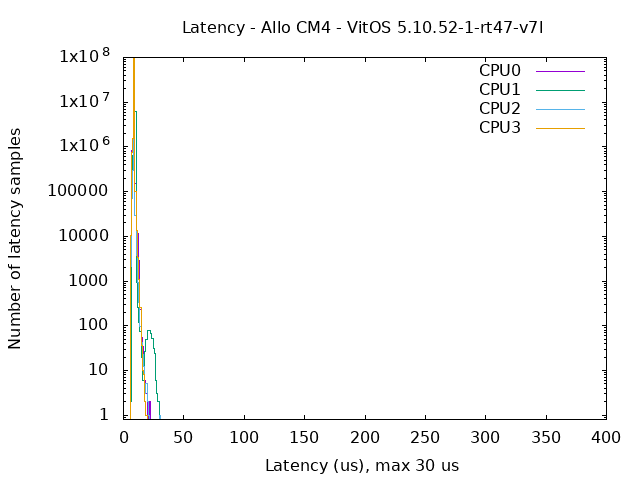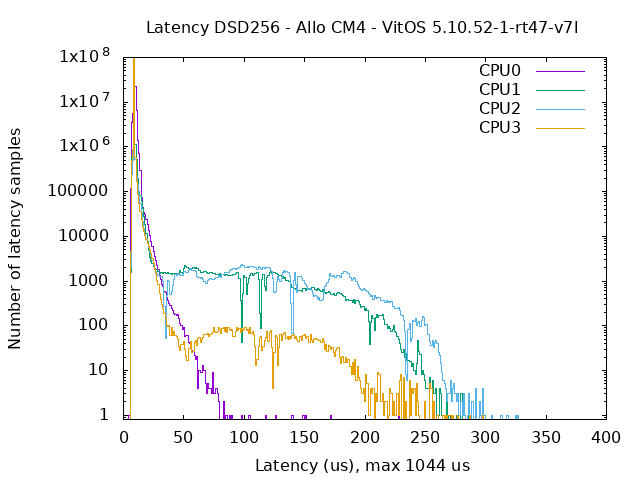
metronet
Retained
-
Member Title
Newbie
Recent Profile Visitors
The recent visitors block is disabled and is not being shown to other users.
-
Probably would work fine with recent Volumio images? I think the easiest setup would be using the revised CM3-CM4 I/O board/adapter with a CM4-Lite (since the USBridge sig has a dedicated power rail for the SD card) Not sure if it would have any benefits over the CM3 though, are you having issues playing DSD-256 or higher? The other thing we all noticed is the CM4 likes to run hot🔥 and a good heatsink is recommended before closing the case. Hope it helps. Cheers!
-
Exactly. sometimes less is more :) Our VBAT is already 5V so there is no need to step-up from 3V3 using a converter such as the ETA1096. I am guessing this is the revised board to address the "buzzing" issue?
-
Of course, no worries. Since you have the CM4 Lite the easiest is probably for you to put the NAA package in the SD card (right beside the config.txt file should be fine) and either login using a keyboard or SSH into the host with root/root: ssh [email protected] pacman -U /boot/hqplayer-network-audio-daemon-4.1.1-2-armv7h.pkg.tar.xz ^ the first (ssh) command is not required if you logged in to a TTY locally using a keyboard. oh and you might want to change the default password since you're there :) passwd
-
Fantastic! I think you are good to go? From here you can either install your favorite choice of player manually or you can download the VitOS Manager from the App/Play store to manage the device. (It should say something like Compute Module 4 once it's detected within the App) Let me know how it goes. Cheers!
-
Right! Assuming your USB is working (keyboard works etc...) the reason why the IP is not showing might be due to the CM4 internal PHY ethernet is showing up as the eth0. You can try placing this device tree blob in your boot overlays folder: /boot/overlays/ noeth.dtbo This will disable the internal ethernet and promote the ax88179_178a from eth1 to eth0: /boot/config.txt otg_mode=1 dtoverlay=noeth And if you use NAA, here is a package for Vitos (disable Roon bridge if you've installed it via the mobile App) hqplayer-network-audio-daemon-4.1.1-2-armv7h.pkg.tar.xz pacman -U hqplayer-network-audio-daemon-4.1.1-2-armv7h.pkg.tar.xz
-
@caesee no worries, we'll figure it out soon :) What was the issue you were having? Vitos default kernel should already be PREEMPT_RT (they recently provided the kernel source here) I am not sure if it's the same for CM4 Lite but for CM4 with built-in storage/eMMC this is what I had to add: /boot/config.txt otg_mode=1 If you were able to login or SSH with root/root perhaps you could share the dmesg and/or lsmod output? By the way I noticed it gets pretty hot with the case closed and on full load. This is probably due to the governor set to performance mode: cat /sys/devices/system/cpu/cpu0/cpufreq/scaling_governor performance Under clock/volt didn't bring down the temperature much so I think I'm gonna need one of those copper heatsink soon :) arm_freq=1200 over_voltage=-2 gpu_freq=100
-
Seeing a 2x improvement over CM3 during idle: DSD256 continuous play with a few SSH/SCP large file copy via the ax88179_178a ethernet: Both tests were done using the dwc_otg host driver with FIQ acceleration (otg_mode=1 in config.txt) The dwc2 overlay from the official CM4 documentation does not play music well with real time kernel.
-
@chipvnThanks for the info! It would be nice if there is a schematic that shows the USBridge sig's main power rail to the compute module VBAT (maybe just high level, it doesn't need to have detail engineering drawing etc...) With the adaptor it measures a bit lower than 5VDC hence the under-voltage warning. It seems to work fine so far without any issues but I might address it with an ultra capacitor ConditionerPi from IanCanada :) Exactly the reason to upgrade to a CM4, the PREEMPT_RT kernel is what we are all after. The silent angel VitOS works out of box for the CM4, on USBridge Sig except I am running an upgraded custom kernel for SA9227 native DSD-256 support on Linux. Linux Raspberry-Pi-Compute-Module-4 5.10.52-1-rt47-v7l #1 SMP PREEMPT_RT Thu Aug 5 16:25:03 UTC 2021 armv7l GNU/Linux Savitech SA9227 USB Audio at usb-fe9c0000.xhci-1.2, high speed : USB Audio access: RW_INTERLEAVED format: DSD_U32_BE subformat: STD channels: 2 rate: 352800 (352800/1) period_size: 35280 buffer_size: 70560 With CM3 the real time kernel works great up until native DSD64, anything higher would need PREEMPT kernel based on my previous tests. Latency comparison for CM3: I plan to do a similar measurement for CM4 and will post the results. Cheers!
-
The CM4 to CM3 board uses a noisy digital circuit that's based on ETA1096 boost converter and a 2.2uf inductor. I don't really know the reason for this cuircuit since the CM4 only needs one single 5V input (comparing the CM4 and the CM3 datasheets). I would love to hear from the designer of this board or people who knows the boost circuit. After bypassing it is dead silent again, as it should be with the USBridge Signature :) The second issue is the under voltage. This may be due to the eMMC version I have instead of Lite (which mechanically has no connection to the SD slot according to the schematic). Powering it from the GPIO 5V to the (now bypassed) ETA1096 pin #7 OUT maybe a good solution, the yellow thunderbolt warning goes away. Everything works great running my custom Linux kernel with native DSD256 support for savitech SA9227 based USB DACs.
-
Hi, I am experiencing an issue when sending HID SET_REPORT requests via the USB hub where it would crash the otg driver. I can consistently reproduce this on both dietpi and ropieee. The issue might be due to the on-board usb network shares the same Bus as clean USB port. Do you have any solutions regarding this issue? I can provide you more detail information if required. Thanks!
-
I followed the readme file and was able to install and start the native app on my phat PS3 >> http://code.google.com/p/sacd-ripper/source/browse/branches/0.03/readme Like Mr Wicked mentioned before this is still WIP... The app does seem to read from the BD drive though and so I think you're right about he's very very close
-
Oops... looks like I jump the gun on this one. Sorry about that. Please let me know if I could help in anyway and once again thank you for all the hard work and contributions. It looks like the day I could backup my SACD collections is finally getting closer
-
The package appears to have been successfully compiled at revision 107. Although had to disable "import io" in ps3dev/bin/pkg.py in order to get the package created. Will give it a try on PS3 tonight
-
I've got a few SACD-R going thanks to SuperAuthor. As soon as the sacd-ripper is out backups can be made using regular DVDs... http://www.tkshare.com/Philips-SuperAuthor-3-0-3-0.html
-
Thanks for the update Mr Wicked. I appreciate it. I am back to recording off the spdif in 24/88.2 for now...







